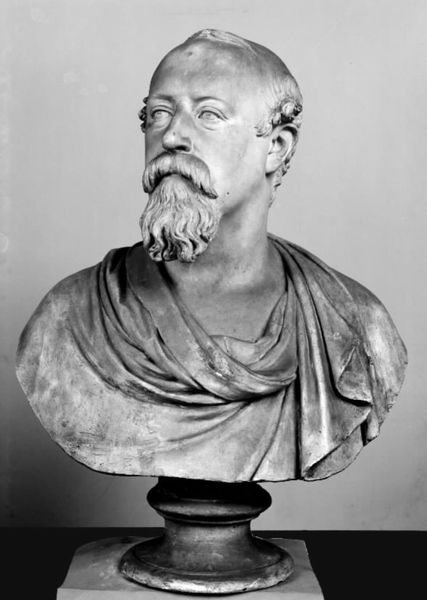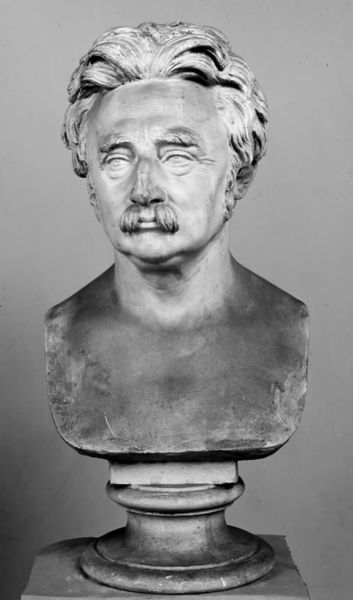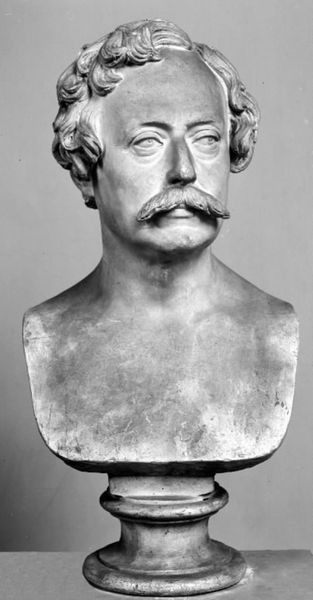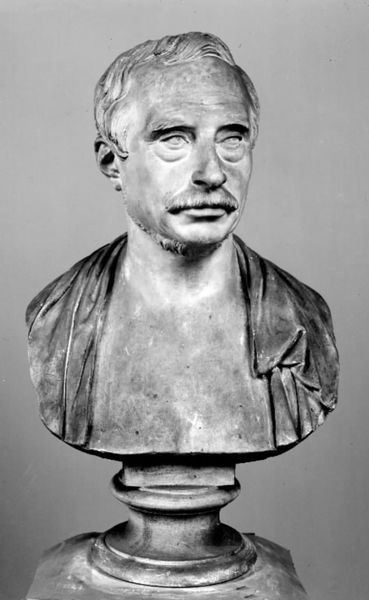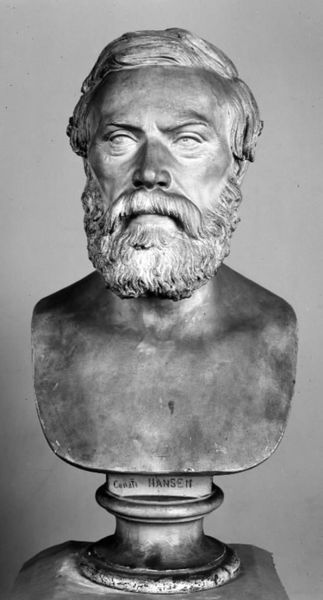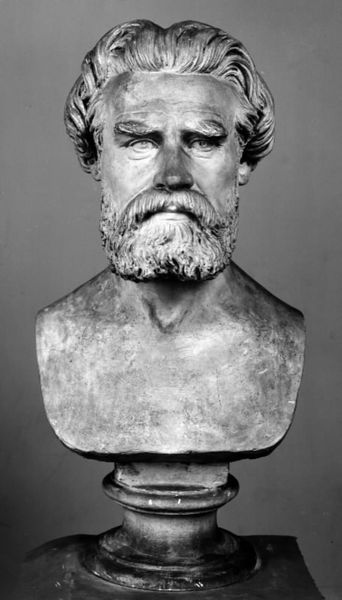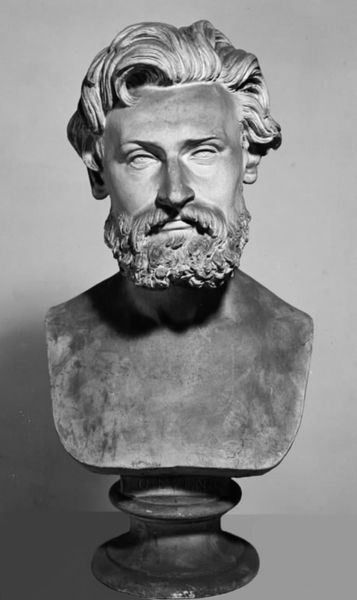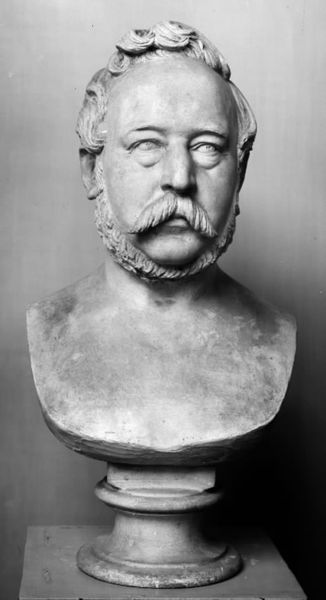
sculpture, marble
#
portrait
#
neoclacissism
#
portrait
#
classical-realism
#
male portrait
#
sculpture
#
academic-art
#
marble
Dimensions: 71.2 cm (height) (Netto)
Editor: This marble bust, "Arkitekten, professor F. Meldahl," was sculpted by H.W. Bissen in 1860. It’s incredible how realistic the face is. I’m immediately struck by the cool, almost austere quality of the marble. What stands out to you about this piece? Curator: What interests me most is the labor invested and the social implications of the material. Think about the marble itself—where did it come from? Who mined it? How was it transported? Then, consider the labor Bissen himself invested in the carving process, the skill required. Was he working alone, or did he have assistants? Editor: So you're focusing less on the professor himself and more on the process of making the bust? Curator: Precisely! A portrait bust in marble was a status symbol. Meldahl, as an architect, would have understood the value and cultural weight of this choice of material. Marble links him, visually, to the classical world and reinforces his position within a certain social hierarchy. Editor: It’s interesting to consider the cost, both financial and in terms of labor. So, in a way, the material itself becomes a key part of the artwork's message? Curator: Exactly. The sculpture isn't just a likeness; it’s a carefully constructed object that speaks to Meldahl's place in society and the means through which he secured this place. It prompts questions about labor and status that a painted portrait, for instance, might not so readily raise. What do you make of the drapery? Editor: Good question. It reminds me of ancient Roman sculpture. So, would that imply an intended association with that period? Curator: Perhaps. The drapery is integral. It hides the unrefined materiality of the support and emphasizes its manufactured condition. Editor: I hadn't thought about it that way, seeing the raw materials and labor involved changes my perception entirely. Thanks! Curator: My pleasure. I, too, found it stimulating. Considering the means of production really grounds the art experience and invites new reflections.
Comments
No comments
Be the first to comment and join the conversation on the ultimate creative platform.

